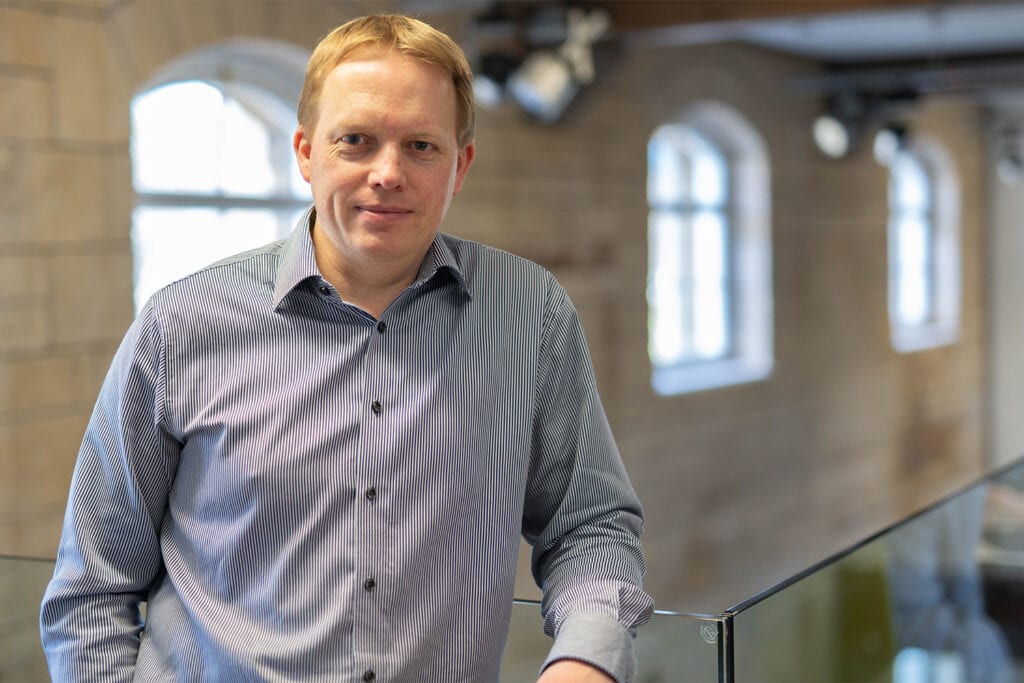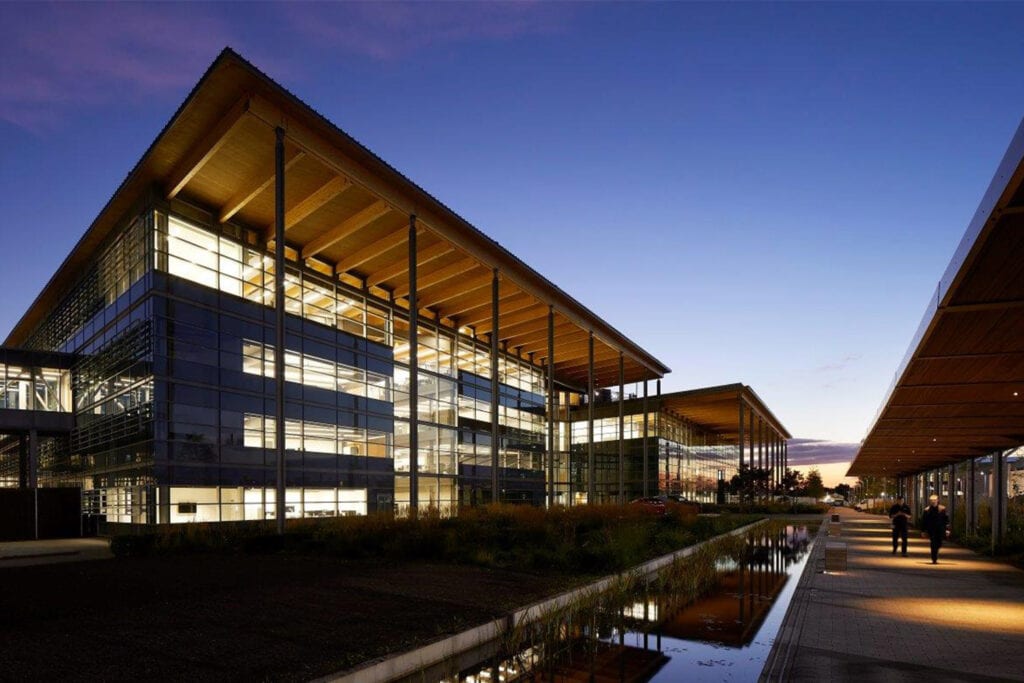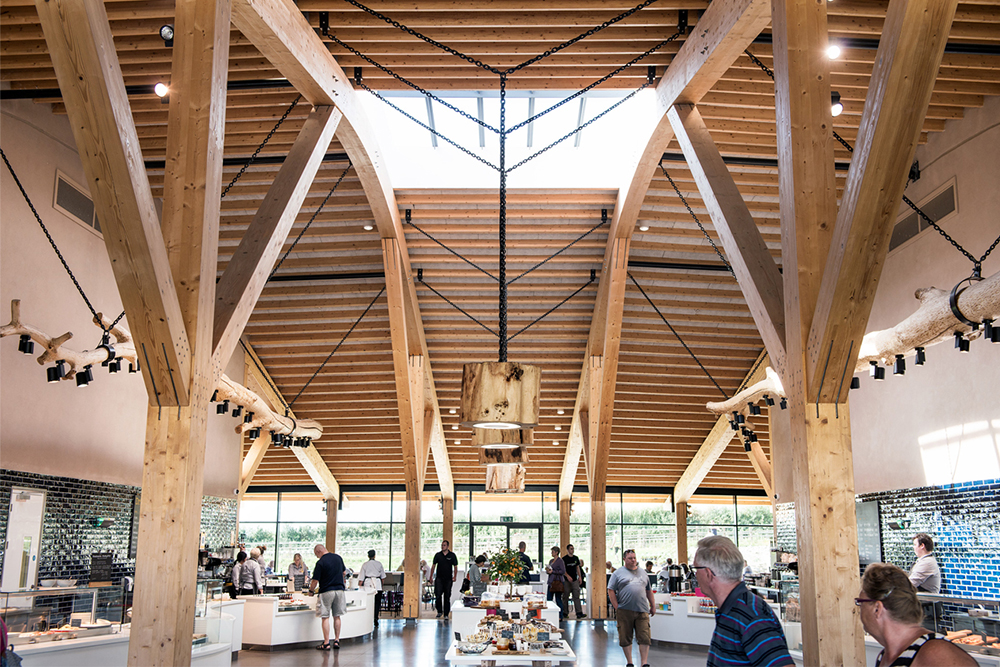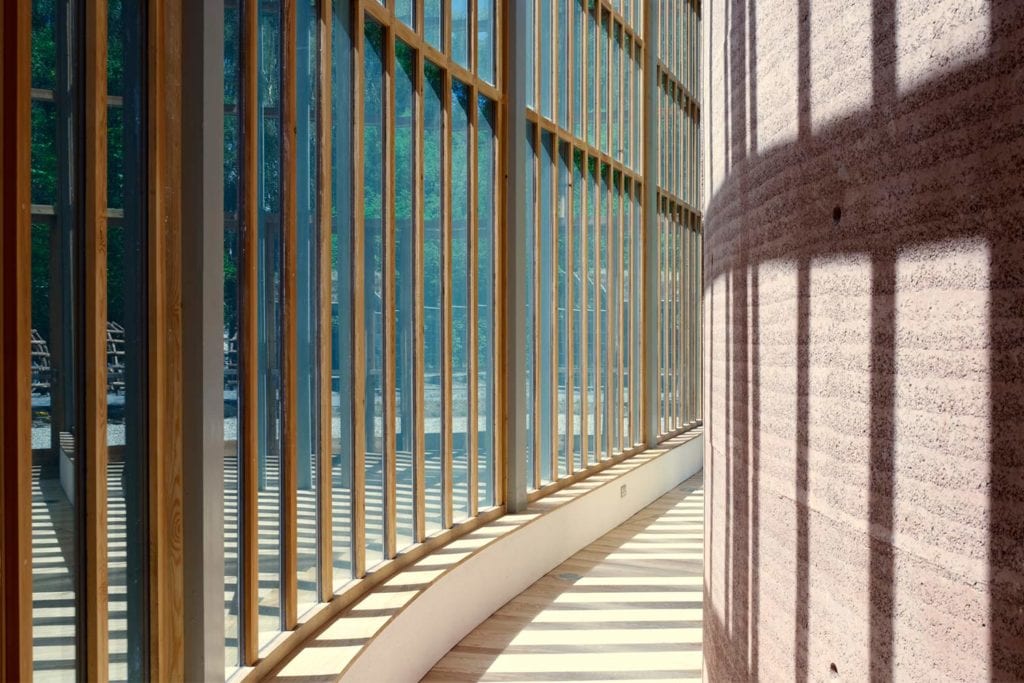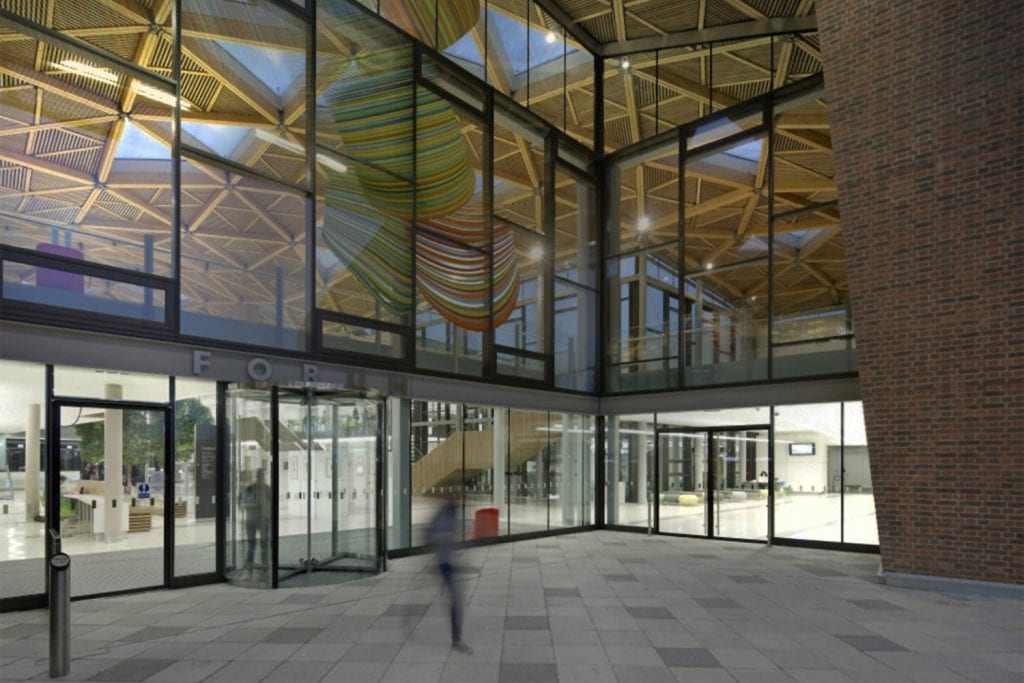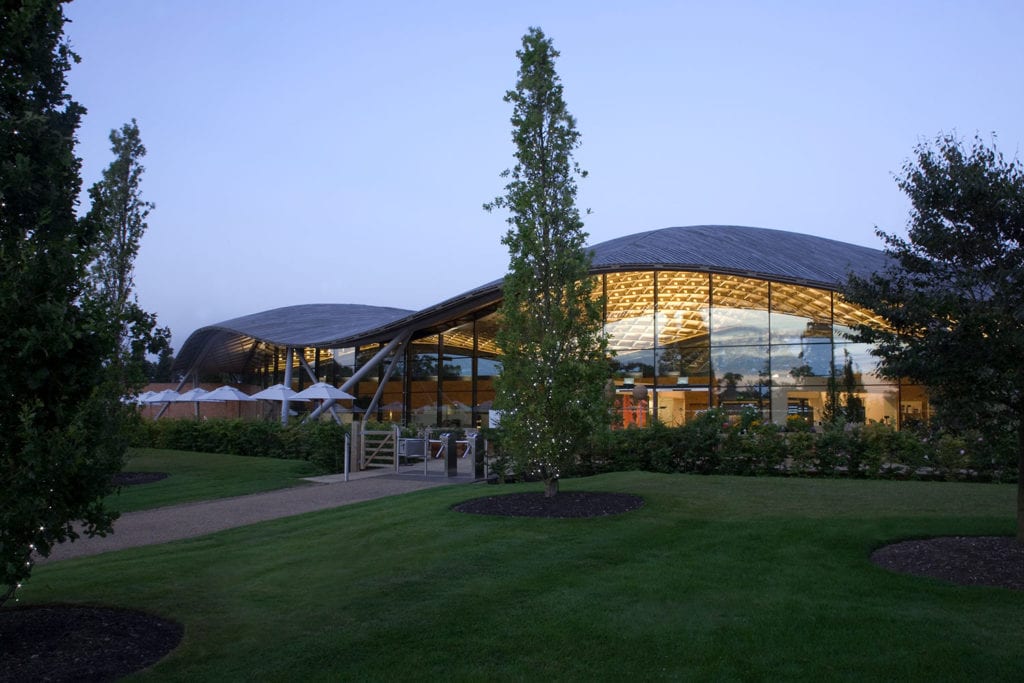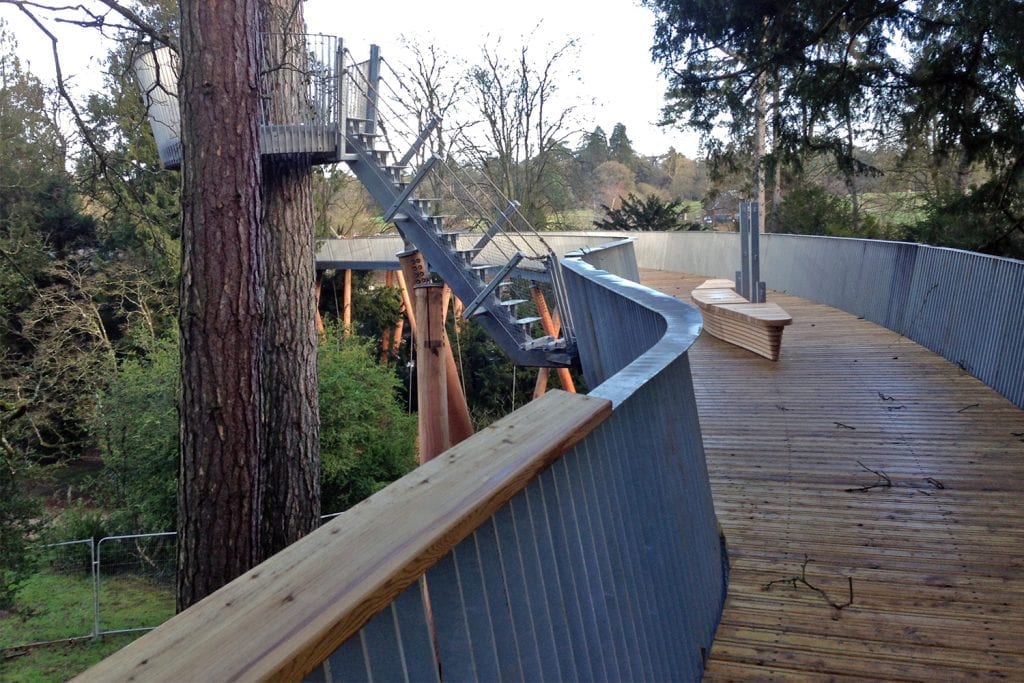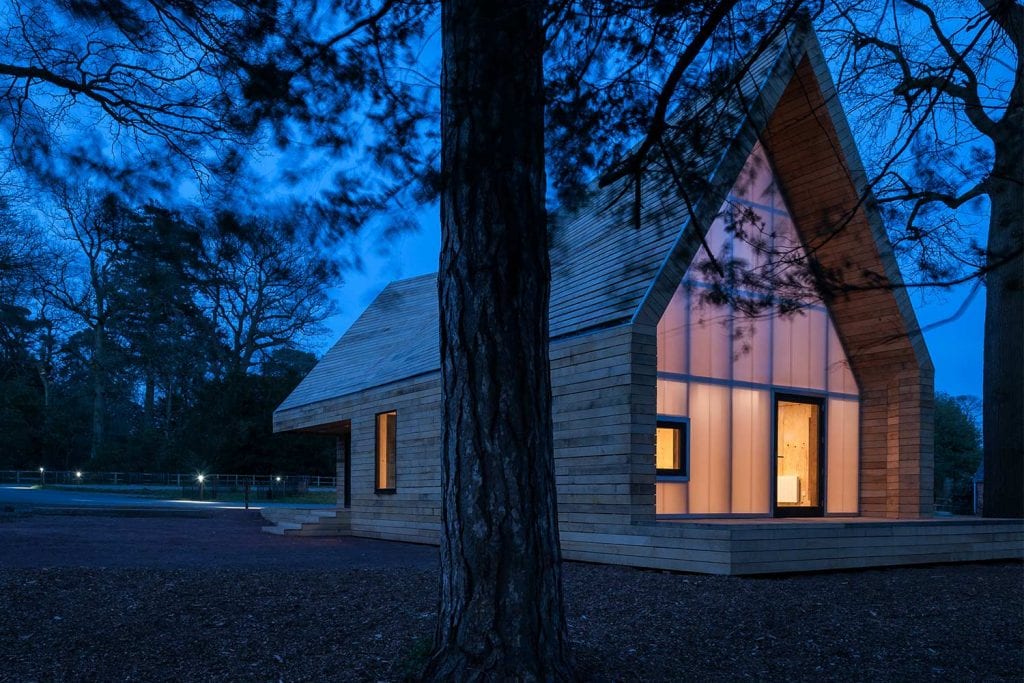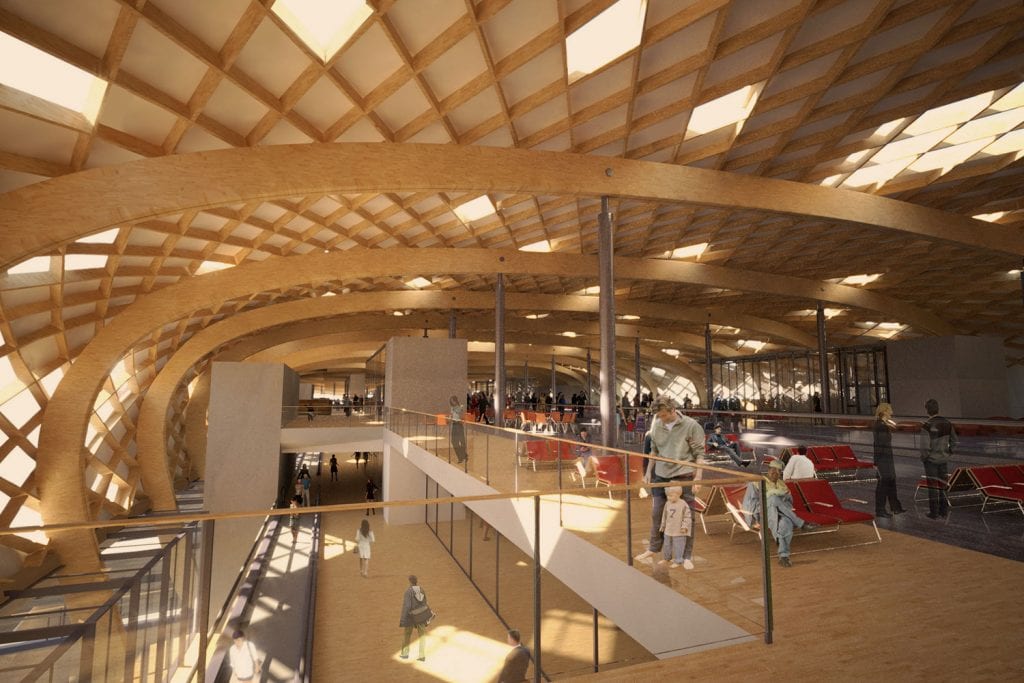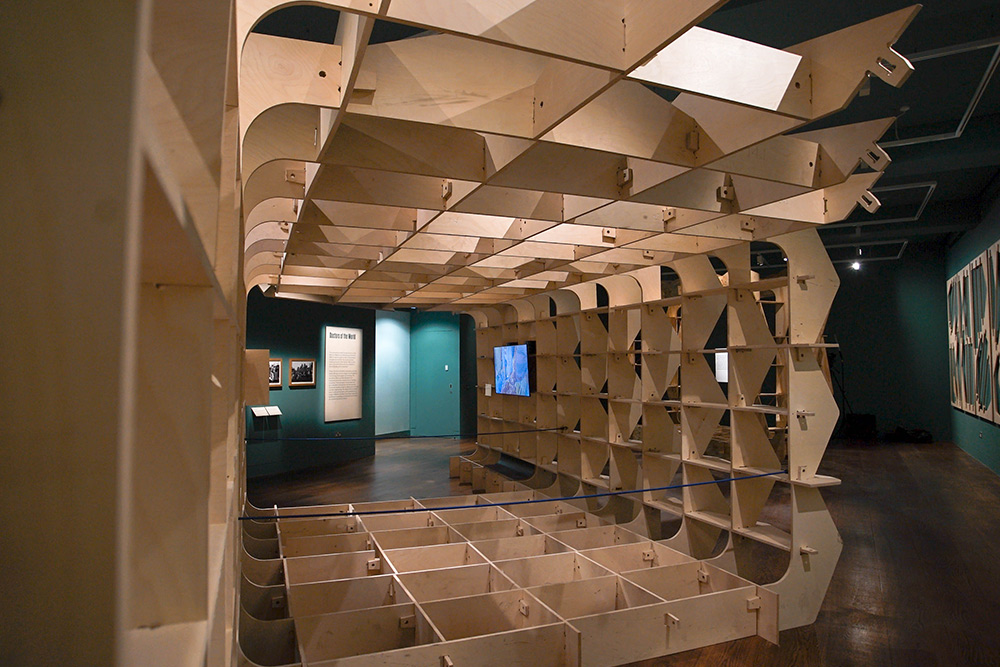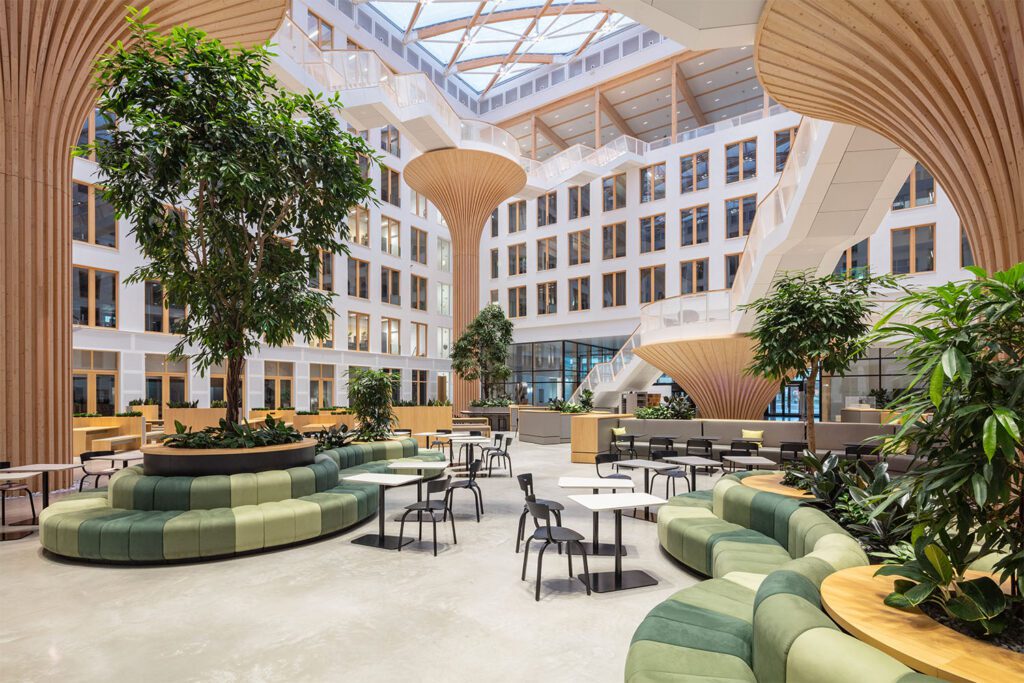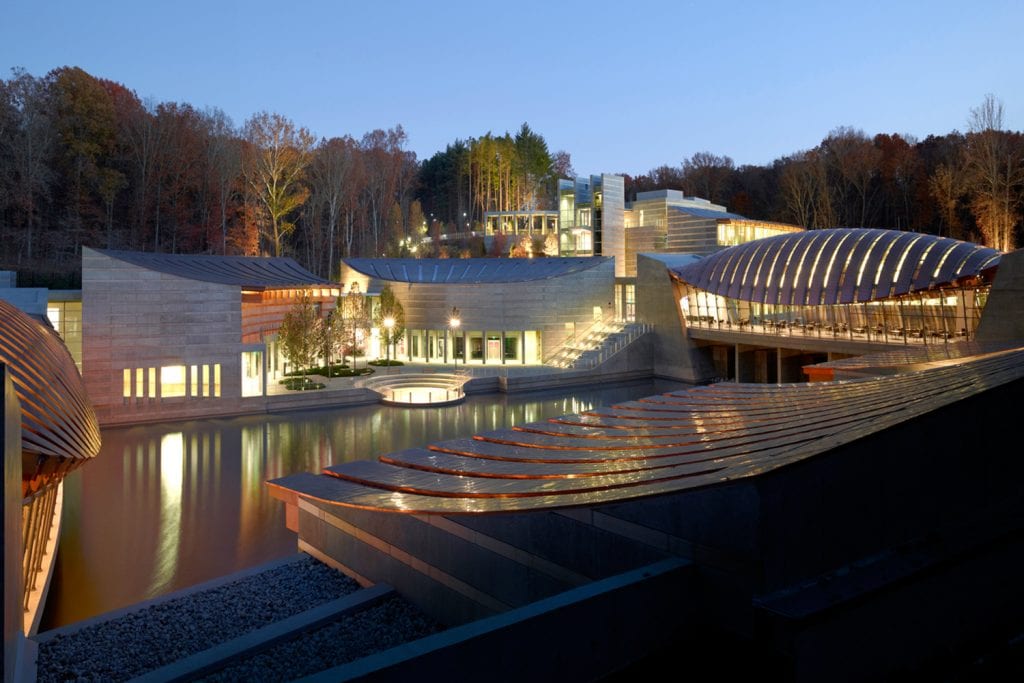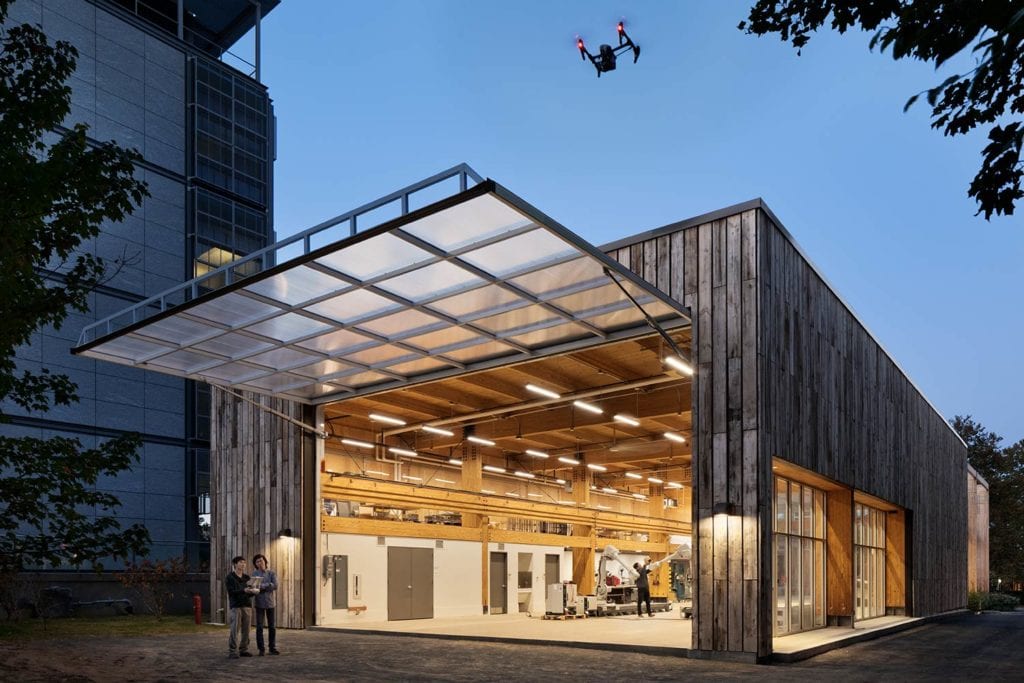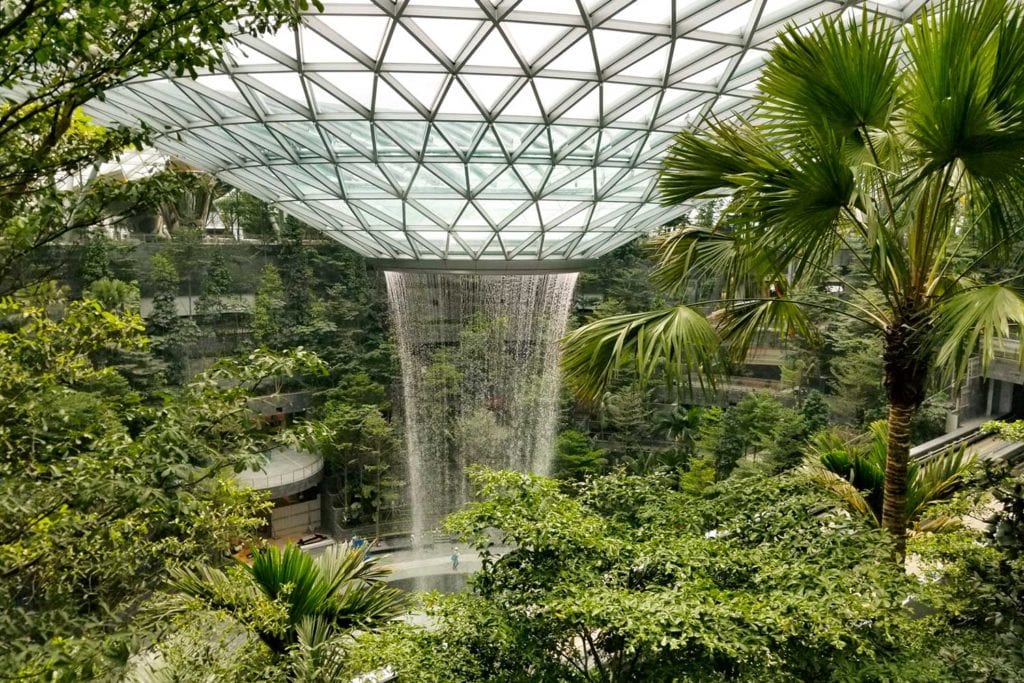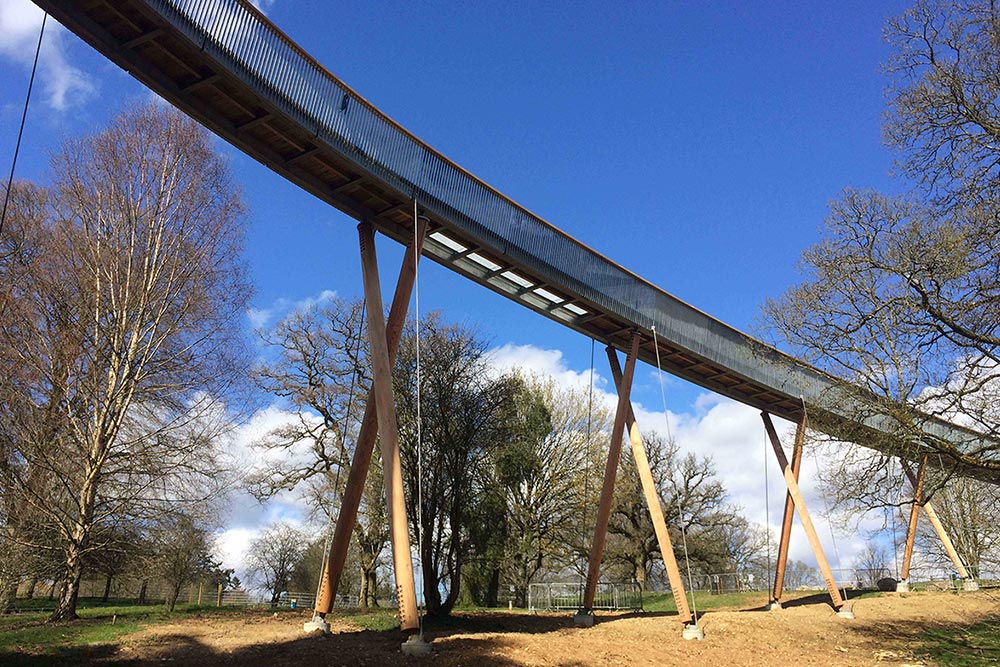Buro Happold’s expertise in timber design and engineering ranges from complex gridshells to innovative cross-laminated structures.
Our timber design and engineering specialists have decades of experience working on sustainable timber engineering projects. As a result, the team has worked with timber as a structural frame for wood and stone buildings, fabric canopies and glass facades. We are also involved in the sustainable development of timber using forestry “waste” products in buildings.
Wood has been used as a building material for centuries. However, with the introduction of steel and concrete as construction materials, timber became less popular. This was due to concrete and steel’s superior qualities pertaining to fire and durability.
Now though, we know that timber has huge potential as a building material. There is more to it than chopping down a tree and milling it. Wood can be processed to make hybrid structures that are extremely reliable.
Timber is often the preferred building material for modular construction. This is because it is light-weight, low-cost, durable and sustainable. For example, EDGE Suedkreuz in Germany is one of our landmark timber projects. This hybrid structure features timber throughout the design. The wooden interior is cost effective, low carbon and visually appealing.
Timber also has the capability to be a renewable and certified resource that provides a viable low-impact supply chain for construction. It is a highly versatile and sustainable material. It can be re-used and recycled as well as being easy to build and de-construct.

Unlocking design innovation
Sustainable, beautiful and strong, timber presents an enormous capacity for unique design. The properties of timber allow us to create incredible, iconic constructions that make the most of wood’s unique features. For example, our work on the stunning Stihl Walkway at Westonbirt Arboretum and Wolfson Tree Management Centre in the UK.
Using timber in buildings also connects us to the natural world and minimises environmental impact. Wood has a low embodied carbon footprint compared to steel or concrete. One of its unique qualities it is its infinitely renewable. Timber can play a significant role in delivering a structure that makes efficient use of energy and resources.
The unique properties of timber
Wood is a highly complex and versatile material. A natural polymeric composite, it has strong directional properties. Therefore, it is important to recognise and exploit these properties to realise the full potential of timber in design and construction.
For instance, when we worked on the refurbishment of the Royal Shakespeare Theatre in Stratford-upon-Avon, designing with timber provided an answer to a particularly complex challenge. The foundations proved tricky, so finding a lighter way to build was transformative. Using a steel-frame with cross-laminated timber solved this problem. It was also more cost effective and minimised construction time.
As a building material, timber also has one of the lowest embodied carbon footprints. Within the context of green building design, timber structures are sustainable, healthy and energy efficient.
Experts in timber engineering
The challenge of timber is to understand its behaviour as a building material and then design appropriately. The expertise of our skilled timber engineers is invaluable to architects when delivering a client’s vision. We’re also proud members of the The Structural Timber Association which represents leading organisations in the the structural timber sector and supply chain.
I am thrilled that our Tree Management Centre for Westonbirt Arboretum won three RIBA Awards. This is a testament to a remarkable project. The engineering by Buro Happold was deceptively complex. The main timber structural members are possibly the biggest ever in UK construction (certainly for 150 years), and very few engineers have the nous to understand how to use the unpredictable, ungraded, unprocessed, untreated timber directly from site.
Piers Taylor, Invisible Studio Architects

Our timber engineering services:
- Freeform roof structures – e.g. gridshells
- All-timber structures – e.g. traditional frame or engineered timber (i.e. cross laminated timber and laminated veneer timber)
- Hybrid timber structures – e.g. steel-timber and concrete-timber
- Composite timber structures – e.g. timber-timber and concrete-timber
- Walkways and footbridges
- Pavilions, sculptures and art installations
- Heritage repairs, restoration, renovation and refurbishment
- Embodied carbon assessments and life cycle analysis
- High level feasibility studies
- Concept design
- Inspections and structural surveys
- Review and third party analysis.


